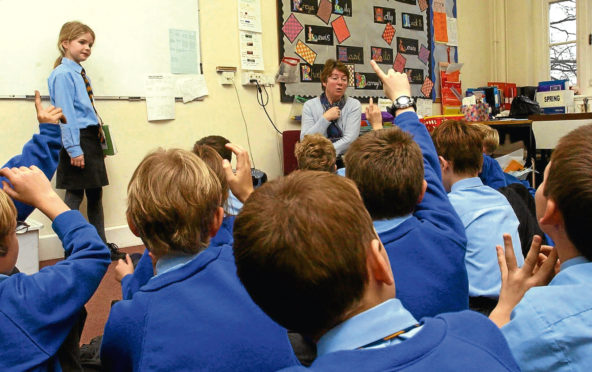An “army” of volunteer tutors made up of retired teachers, students and professionals should be recruited by the government to stop the attainment gap from widening, a leading education commission has said.
The Independent Commission on School Reform published on Wednesday its paper on learning at home (PDF link), as the country’s school pupils face weeks in lockdown because of the coronavirus pandemic.
In the same way the NHS has called on volunteers to help with non-skilled tasks, professionals and those with qualifications – including retired teachers and undergraduate students – are being encouraged to help “augment” teaching in unpaid roles using technology like Skype and Zoom.
Chaired by former director of education and Royal Society of Edinburgh fellow Keir Bloomer, the commission says providing online tutors to lead classes through internet-teaching could prevent the attainment gap from widening.
This is the first time our national education system has ever been completely shut down. This has significant implications for children’s education and for their social isolation, and evidence suggests that disadvantaged children will suffer the most.”
The Scottish Government has prioritised closing the gap in attainment between the country’s poorer children and more well-off pupils, resulting in the programme the Scottish Attainment Challenge.
The government recognised “many children and young people living in our most deprived communities do significantly worse at all levels of the education system than those from our least deprived communities. This is often referred to as the attainment gap”.
Learning at Home
In their report, the commission raised concerns that parents and carers in more disadvantaged households feel less confident in helping their children with school work.
The gap could widen, they say, because parents and carers of children from more “well-off” families might already have organised for private tuition to be put in place.
This could be alleviated, they add, by bringing on board a new “online army of tutors”.
Mr Bloomer said: “As John Swinney said last week, when quite rightly announcing the school closure, this is the first time our national education system has ever been completely shut down.
“This has significant implications for children’s education and for their social isolation, and evidence suggests that disadvantaged children will suffer the most.
“Parents will want to do their best but will need support, and the commission is clear Education Scotland can help by recruiting an army of online tutors from the ranks of retired teachers and teaching students to supplement the excellent online work being done by existing class teachers.
“We do not pretend that this is an easy task, but Education Scotland has the staff and skills to do it, and the Scottish Government has the ability to publicise it widely.
“Nobody can make this a normal time for a child’s education, but we can make it less harmful, and we must make it better for the vulnerable children who stand to suffer the most.”
“Exploring all options”
A spokesperson from Education Scotland said: “Our staff at Education Scotland are already helping directly with frontline teachers and local authority officers to ensure learning continues during this challenging period.
“We are exploring all options and welcome discussions with local authorities and key national bodies to look at a range of innovations over the coming weeks to support the learning of our children and young people at this time.
“One of these approaches is to use Glow, Scotland’s nationally available digital learning platform.
“This is already being used to great effect in schools and local authorities in Scotland.
“Glow can help learning to continue outside of the classroom by enabling learners and teachers to access all the tools and features at any time, on any device with an internet connection.”

